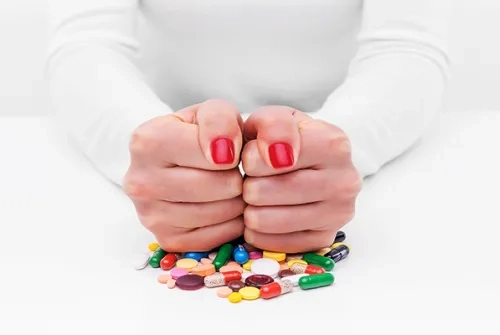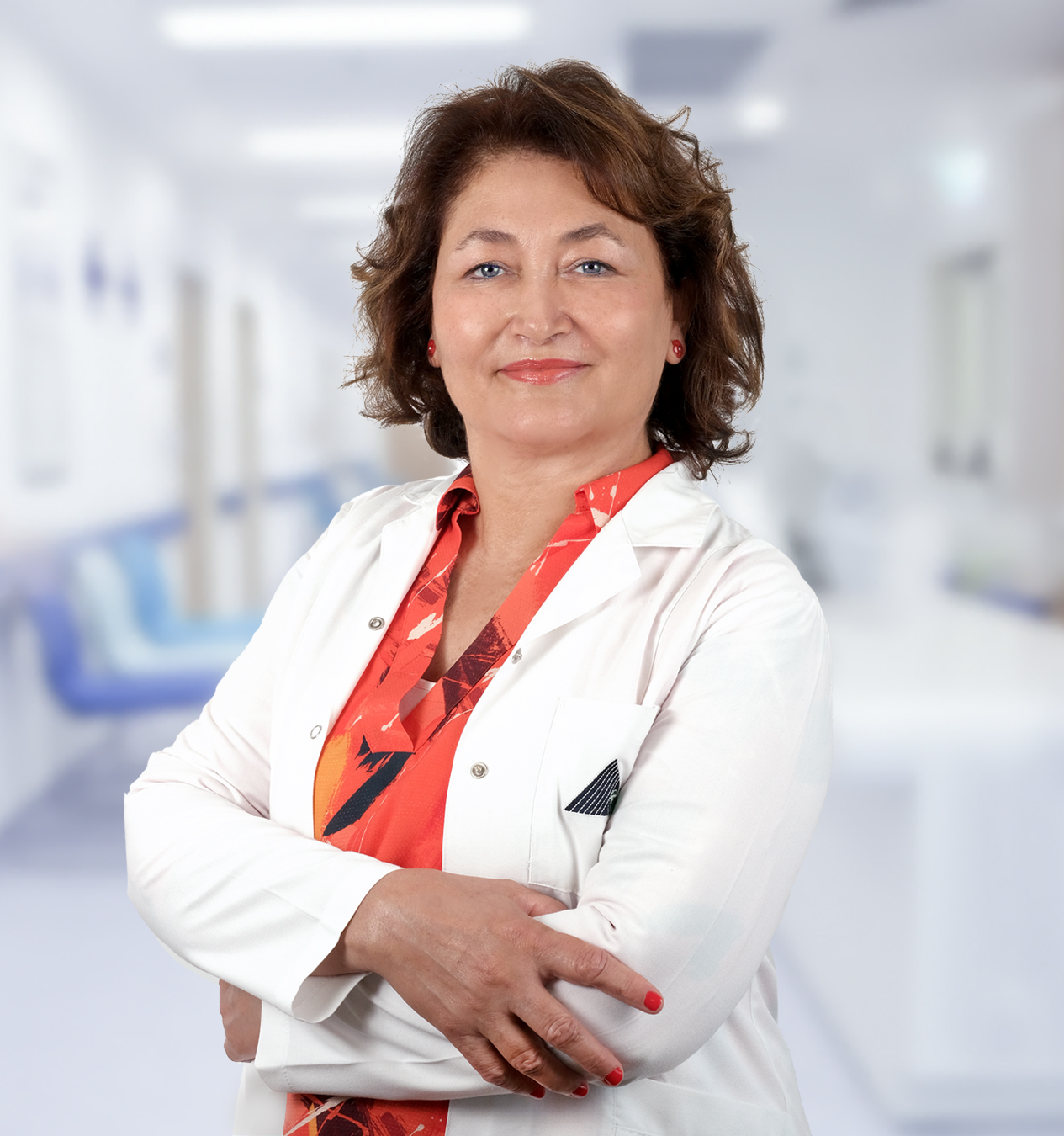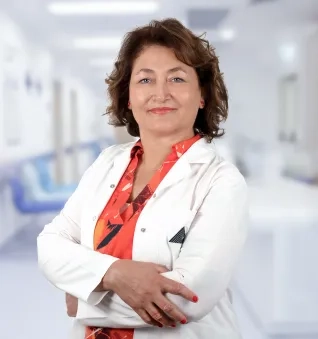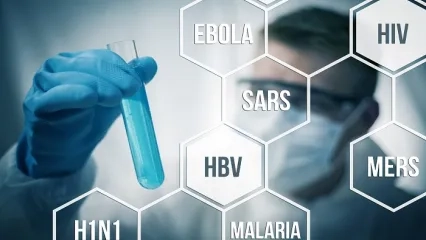Alo Yeditepe
Alo Yeditepe
Why aren’t Antibiotics Working Any More?
Modern medical science has prolonged and improved people’s lives. Just a century ago normal life expectancy was 45-50 while now we can expect to live almost twice as long. This lifespan is essentially down to two medical miracles – vaccines and antibiotics. But we are now faced with an imminent danger regarding antibiotics. The ENEMY has sneaked through a gap in the door and got inside. The number one enemy of overall health in society is now the Multiple Drug Resistant (MDR) bacteria that threaten to bring the era of antibiotics to an end. Unfortunately, most people (including some healthcare workers) remain unaware of the gravity of the problem.
Yeditepe University Hospital’s Prof. Dr. Meral Sönmezoğlu prepared this briefing for Reference readers hoping to raise your awareness- of the situation, brought about by the scientifically irrational and unnecessary use of antibiotics. Perhaps the most crucial aspect of rational use of medication is rational antibiotic use; this means it needs firstly to be appropriate to clinical needs, able to meet special situations, taken at the proper time intervals without delays, at minimal cost. In a nutshell – the right way for the right patient!
When Fleming first discovered penicillin, this antibiotic was able to treat multiple microbes including staphylococcus in miraculously small dosages. Today, we are using thisantibiotic in much larger dosages againstn bacteria that have now developed a resistance.
The madness of unnecessary antibiotic use is now a major issue on a global scale. According to US Center for Disease Control (CDC) data, prescriptions for 50 million doses of antibiotic are issued unnecessarily every year. Looking at the data by disease, the leading item on the list is antibiotic use against common colds. In a speech he delivered on 14th March 2012, the head of the World Health Organization Dr. Margaret Chan drew attention to this issue, stating that it was a global problem in which preferred antibiotics in daily use would very soon lose their effectiveness entirely. Generally preferred for their ease of use, we were confronting a situation in which the loss of favored antibiotics will soon mean that we will be forced to use the more toxic, more expensive, and generally intravenously administered antibiotics as used in intensive care units.
Another related problem is the role played by highly resistant bacteria in hospital-acquired (nosocomial) infections, and genetically spread resistance-bearing bacteria that have rendered themselvesuntreatable. These bacteria are rapidly multiplying; they include MSRA, ESBL (+) gram negatives, carbapenem resistant pseudomonas carrying the resistant gene, VRE, BISA, MDR tuberculosis bacilli, pan-resistant klebsiella, MDR acinetobacter etc.
A Nightmare Coming True?
The post-antibiotic era is medical science’s worst nightmare about to come true. This could spell the end of modern medicine as we know it. It means dying from tonsillitis or a scratch to the skin, and saying goodbye to patient safety and quality medicine. Training and education is necessary at every level of society including us healthcare professionals. Legislative rules and regulations need to be made applicable to the new era and science. Let me illustrate what I mean more clearly with a sample case:
Case: a terminal stage ALS patient with a history of frequent hospitalization at different hospitals. He has a temperature of 38 °C, with elevated white cell and CRP counts. Screening and stool tests have shown he is producing Vancomycine-resistant Enterococcus (VRE) which is highly resistant to antibiotics, and life-threatening outside the intestines. The ALS patient has no chance of survival. Our medical manuals tell us that there is a new alternative antibiotic against VRE called linezolid. However these ‘enterococcus’ are bacteria that live in the normal intestinal flora of both animals and humans. Moreover, Vancomycine resistance in this sample case shows no pathogenicity (ability to cause disease). From the perspective of its chemical dynamics,
Linezolid is not actively found in the stool and cannot enter the intestine. There is no medication or antibiotic capable of fighting VRE’s capacity to carry in the stool. This medication has a number of potentially fatal side effects. It is also extremely expensive but essential as a lifesaving medication against life threatening infections. It is needed in this case. In the event it is used, and the VRE develops a secondary resistance, it will no longer be of any use against other infections.
Losing The Struggle
The weapons of success in this global war are as follows:
Effectiveness: research is needed into appropriate and inappropriate antibiotic treatment methods for bacterial eradication / clinical regulation.
Accuracy: compatible clinicalmicrobiological outcome rates and microbiologic outcome rates (as a result of side effects, super infections and unsuccessful treatment).
Appropriateness: rules concerning infectious disease consultations and hospital antibiotic practices in compliance with the guide manuals.
Compliance: Continuous post medical training changes in practices, issues, doctor feedback.
In spite of all these data and technological advances we are rapidly losing this existential battle. There is a clear need for new antibiotics that may take decades of research, studies and trials. The clearest indication of scientific helplessness is that old antibiotics that we stopped using 50 or 60 years ago because of their high toxicity (like colimycin and fosfamycin) are being taken off dusty shelves; even more worrying, they are being pressed back into service. Our failure to win this war renders it a candidate to be the most severe medical issue that will face future generations, an issue that carries the same end-of-the-world implications for humanity as the worst climate change and global warming scenarios.
Education Is Key
The education and training I am talking about needs to be given to all healthcare professionals and to facing healthcare professionals in this country – namely the violent reaction from patients’ loved ones when their demands for an antibiotic prescription are not met. The strategic chart below, which shows how resistance has become an insoluble problem, especially in Turkey, provides a highly visual educational presentation. Interpretation of this table can be summarized thus: There is a 50% probability in Turkey that serious infections like pneumococcal meningitis, pneumonia and sepsis will not respond at all to penicillin derivatives any more. Yet just 30 years ago the method of choice to treat these infections successfully was pure, very cheap, penicillin.
The Enemy Within
The rational objectives of medical science in this struggle against the foe of antibiotic resistant bacteria are:
1. Rational, scientific use
2. Urgently to reduce the use ofantibiotics
3. Reduction in medical costs
4. Decrease the resistance
5. Avoid any decline in patient safety and medical quality
6. Establishment and dissemination of antibiotic control programs
7. Use of antibiotics manuals
About
Faculty and Year of Graduation:
Medical Faculty of Ankara University, 1984
”
See Also
- What is Hepatitis B? What are its symptoms? How is it Transmitted?
- What is HMPV Virus? HMPV Symptoms and Ways of Transmission
- Why Is the Flu Lasting Longer This Year?
- What Precautions Should Be Taken Against the Cold Epidemic?
- Don't Be Late Fighting Against Diseases
- Antibiotics Kill Beneficial Bacteria, Not Viruses
- What is Hepatitis? What are the Symptoms and Treatment Methods?
- Symptoms and Treatment of Tick Bites
- Summer Infections
- Precautions Must Be Taken Against Loss of Life Due To Infection in Thalassemia
- Information on H1N1 (Swine Flu)
- Summer is Coming... Beware of food poisoning!
- Our Taboos Affect the Increase in the Number of HIV-Positive Cases in Turkey
- Strep A Symptoms and Treatment
- Do Not Put a Cigarette Butt or Pour Olive Oil or Liquid Soap on the Tick
- Reheat the Food You Cooked Only Once!
- HIV Can Be Hidden for 10 Years without Any Symptoms!
- 290 Million People Live Without Knowing They Have Hepatitis
- Things to Consider When Touching Meat at Eid
- What Is Anthrax Disease?
- The Way to Fight AIDS is to Raise Awareness First
- Still Not Too Late For Flu Vaccine
- What is Rhinovirus?
- Fighting with Thalassemia: Meral Yılmaz
- Thalassemia Spreads from the Mediterranean to the Whole of Europe with Migration!
- Early Treatment of Crimean Congo Hemorrhagic Fever is Vital
- Approximately 3 Million Patients Need Blood Transfusions Every Year in Turkey
- When to Get the Flu Vaccine
- Antibiotics Account For 14% of Prescription Costs
- West Nile Virus Replaces Malaria
- It Is Necessary to Try to Be Healthy in order to Be Protected
- A New Flu Outbreak is Expected Every 10 Years
- 63% of Vector-Borne Diseases are Caused by Lyme Disease
- Experts Warn About Flu Risk
- Mosquito Infection Risk
- The World Raises an “Alarm” on Antibiotic Resistance!
- What is COVID-19?
- The Mask Requirement was Removed and the Importance of Social Distance Increased!
- How to Prevent COVID-19 in School-Going Children
- WHO (World Health Organization) Warns for Antibiotic Resistance!
- Who Is Threatened by Monkeypox?
- Ways to Prevent Coronavirus
- Swine Flu / H1N1
- Life Returns to Normal with Caution
- What is Monkeypox Virus? What Are the Symptoms of the Monkeypox Virus?
- What is Lyme Disease?
- How to Tell if You Have a Mild Coronavirus?
- Pay Attention to These Rules for COVID-19
- Hand Sanitizer Usage Guide
- The Priority Rule for the Protection from Summer Infections is Hygiene
Alo Yeditepe




